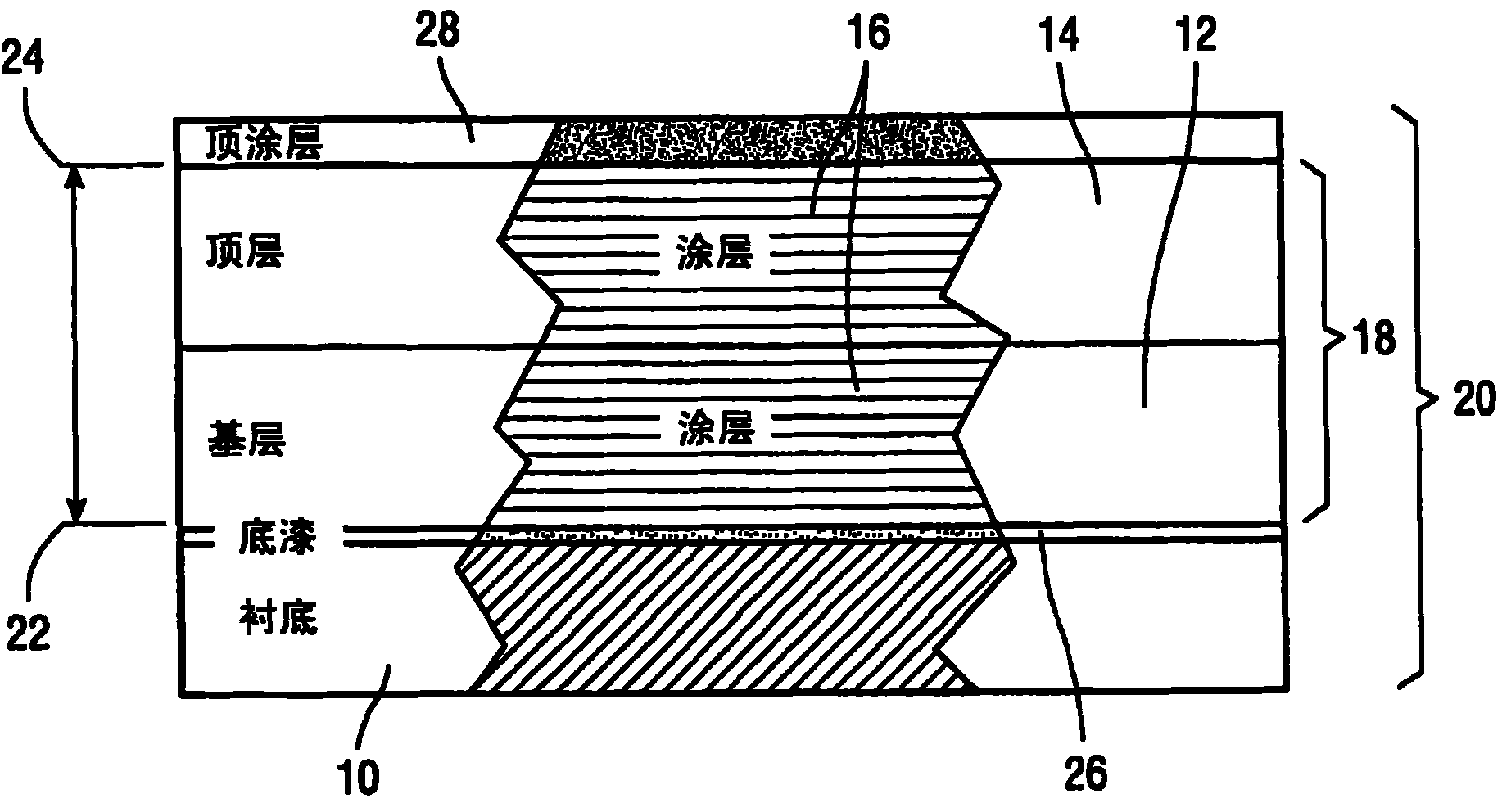High temperature substrate protective structure
A technology of substrate and crystallinity, which is applied in the direction of coating non-metallic protective layer, application, and bendable conductors, can solve the problems of poor long-term durability, high shrinkage, difficult coating treatment, etc., and achieve the reduction of metal Effects of corrosion, improvement of electrical insulation, and improvement of workability
- Summary
- Abstract
- Description
- Claims
- Application Information
AI Technical Summary
Problems solved by technology
Method used
Image
Examples
Embodiment I
[0054] PAEK-based coatings comprising an A-PEKK base layer and a PEKK top layer were compared to standard single-layer PEEK by measuring resistance to thermal cycling in an oven and in ice water. Compared with PEEK, A-PEKK has very low shrinkage (0.3% to 0.5% compared with 0.7% to 1.0% for PEEK) and twice the elongation at break (80% compared with 40% for PEEK) , but poor wear resistance. It is less crystalline (less than 15%) than PEEK, which is typically 25% to 30% crystalline. A-PEKK can be easily applied to components of various geometries and sizes without fracture or delamination like PEEK. Compared to PEEK, A-PEKK / PEEK multilayer coatings show many advantages, such as processability, durability against stress, and excellent wear resistance. The present invention uses, in part, ΔT, which is the number of test cycles, and the pass / fail definition, which appears specifically in the Sample Preparation, Test Methods, Results and Conclusions sections. Use industry standard...
Embodiment IV
[0106] Example IV. Bonding of A-PEKK / PEEK film to metal by secondary application of heat and pressure.
[0107] An A-PEKK / PEEK film was extruded, wherein the A-PEKK layer was 1 mil thick and the PEEK layer was 5 mil thick. The shrinkage rate of material, elongation at break and crystallinity are with embodiment 1. The membrane was placed on a degreased aluminum plate. The film-metal system was placed between two heavy flat steel plates, pressurized and heated to 635°F. Since the processing temperature is below the melting temperature of the semi-crystalline PEEK layer, the PEEK layer does not melt. The processing temperature is above the melting temperature of the amorphous A-PEKK layer, which will soften and bond to the metal.
Embodiment V
[0108] Example V. Use of A-PEEK / PEEK structure as tie layer for fluoropolymer-metal coating.
[0109] Due to better adhesion and lower solvent permeability than porous fluoropolymers, PEEK is occasionally used as a base layer for thick porous fluoropolymer coatings such as PTFE. Better adhesion and lower permeability improve durability and corrosion resistance compared to containers with simple PTFE coatings.
[0110] Using A-PEKK / PEEK instead of PEEK improved the adhesion of the polyketone layer to metal. Solvent and gas permeation through polymers are compared as follows: PEEK<A-PEKK<<PTFE. Since the PEEK layer shrinks when it crystallizes, the use of A-PEKK / PEEK improves the quality of the coating by eliminating pinholes, cracking and delamination inside containers and tubes.
PUM
| Property | Measurement | Unit |
|---|---|---|
| thickness | aaaaa | aaaaa |
| thickness | aaaaa | aaaaa |
| melting point | aaaaa | aaaaa |
Abstract
Description
Claims
Application Information
 Login to View More
Login to View More - R&D Engineer
- R&D Manager
- IP Professional
- Industry Leading Data Capabilities
- Powerful AI technology
- Patent DNA Extraction
Browse by: Latest US Patents, China's latest patents, Technical Efficacy Thesaurus, Application Domain, Technology Topic, Popular Technical Reports.
© 2024 PatSnap. All rights reserved.Legal|Privacy policy|Modern Slavery Act Transparency Statement|Sitemap|About US| Contact US: help@patsnap.com









